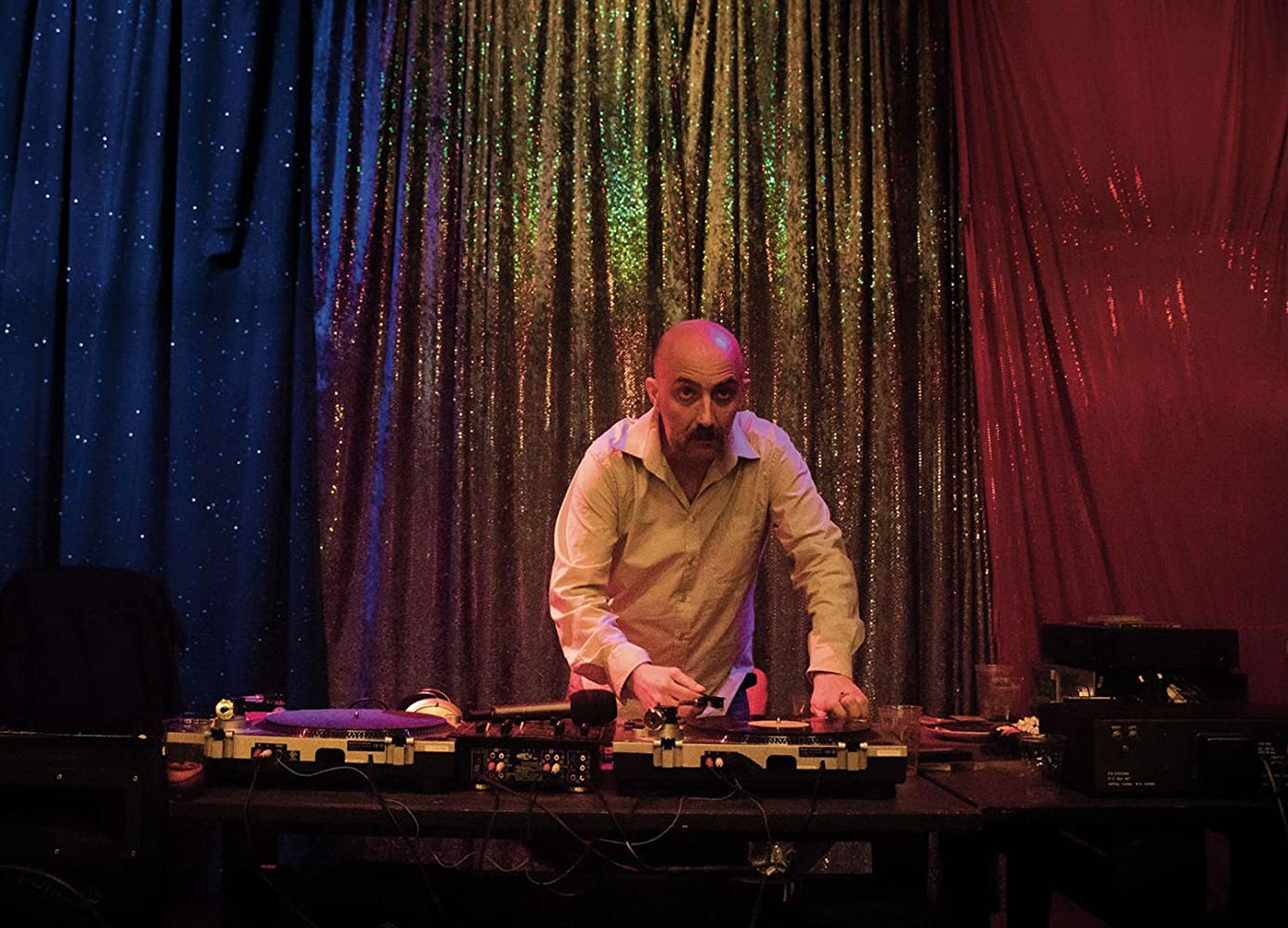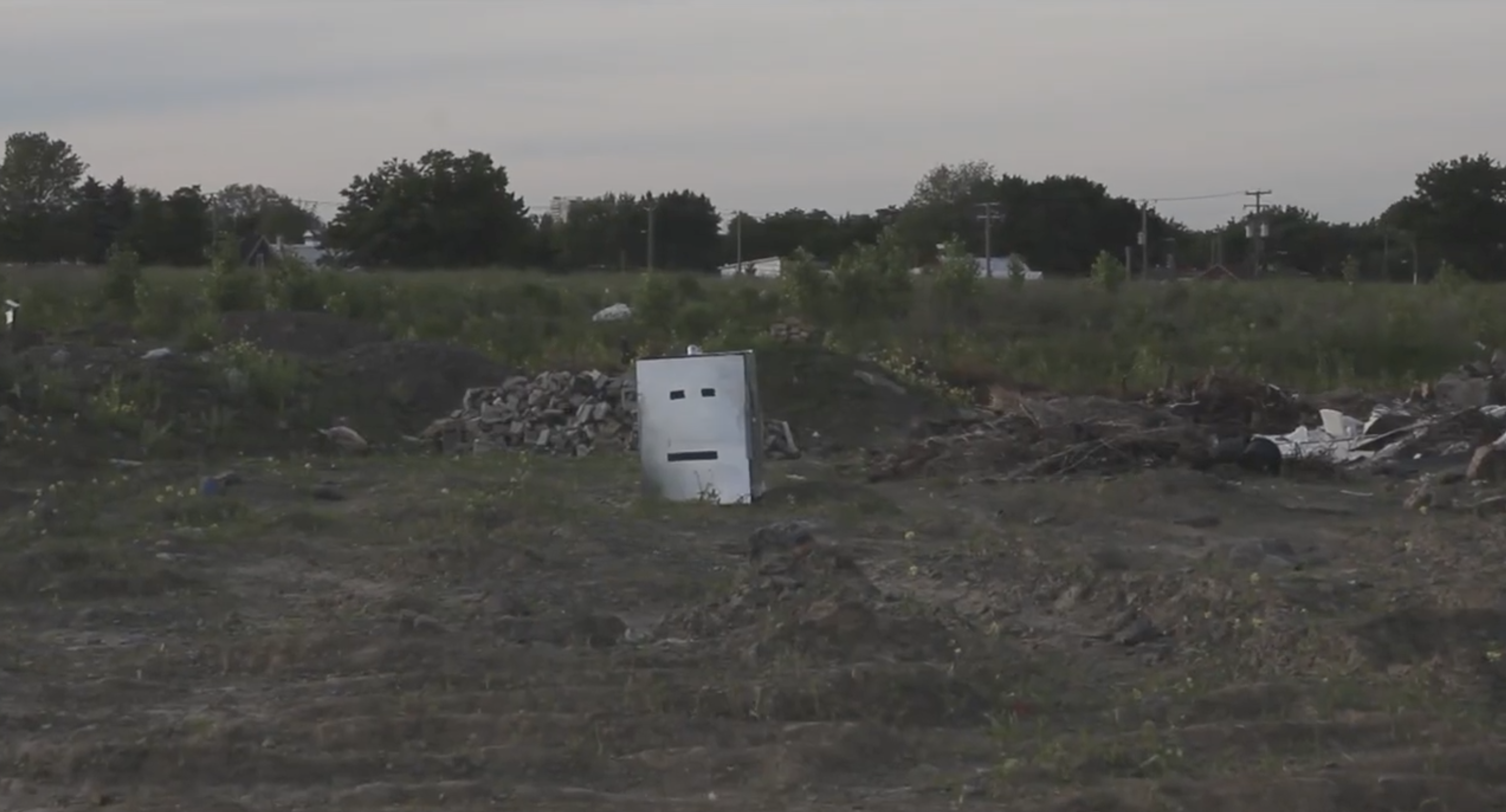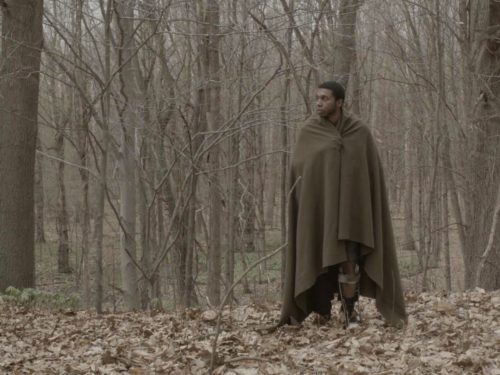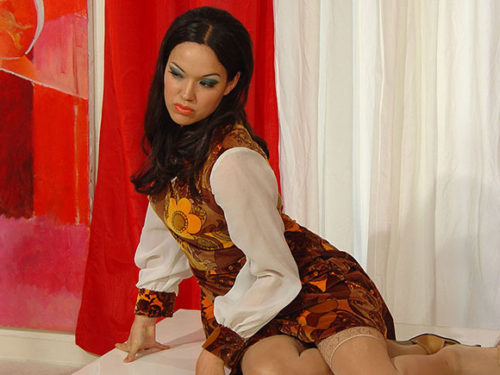Through his last decade of work, Noé progressed from a provocateur to a true auteur with films like Climax, Love and Enter the Void
When considering the work of Gaspar Noé, one word immediately comes to mind: provocative. Noé’s work includes many types of provocation, maybe best imagined in his own bold, neon, pulsating opening credits as a laundry list of shocking terms: subversion, perversion, hallucination, depravation, titillation, mutilation, violation, homicide, suicide, incest, rape, revenge, assault, inebriation, dysfunction and corruption.
If that list doesn’t make clear how triggering and challenging Noé’s work can be, let me say it very clearly: If you’re not in the mindset to read about a filmmaker who delves into sex, drugs and violence in all its forms (including sexual violence against women), stop reading now.
Alternatively, if you’re ready to investigate an artist’s unique repertoire of unforgettable, unflinching, irreplicable cinema, then buckle up and join me down this rabbit hole.

As I imagine is true for many viewers, I distinctly remember the first time I saw a Gaspar Noé film. I was a junior in high school, just wetting my feet in the world of shock cinema and exploring the most dangerous, explicit, inappropriate work I could find. These are the years I discovered films like Suicide Club, Ichi the Killer, The Man Behind the Sun and similar stomach churners. Though edgy Asian titles were top of mind, I slowly made my way to the films of the New French Extremity movement. The umbrella term enveloped most French films in the early 2000s that straddled the line between arthouse and horror. The refined French language, gorgeous European actors and casual attitude are a shocking contrast to the moments of gory, explosive violence.
Related: High Tension: Conflicting Fantasies Of A Different Body
One of the early voices of this movement was Gaspar Noé. The son of Argentinian painter Luis Felipe Noé, whose famous works include “HiSoUR” and “Introducion a le serie No. 20“, Gaspar undeniably followed in his father’s footsteps. Gaspar’s work is similarly fascinated by the blurred lines between pleasure and pain, beauty and ugliness, life and death.
His 1998 debut feature, I Stand Alone (inspired by his short Carne), explores these themes in their most debauched form. It is an abrasive takedown of French Politics that nonetheless gets to the heart of what makes Noé so invigorating: his signature in-your-face style, striking graphics and ambiguous chapter titles all appear in his debut. This film also highlights what often makes him so reviled: the inner thoughts of the protagonist are horrific, and he doesn’t assuage viewers by suggesting that these thoughts are reprehensible. It’s a primal scream of a film. In his early work, it can be difficult to discern where his characters’ beliefs end and his own begin.
His follow-up, Irreversible (2002), is even more controversial. The film follows the destruction of a happy couple after the woman (Monica Bellucci) is brutally raped, all told in reverse and ending with the man’s attempt at revenge. It’s a rather cruel premise that forces viewers to see things at their best right at the end of the movie, knowing exactly how horrible these character’s lives would soon become. Ultimately, Irreversible is an exploration of fate and our lack of control over where our lives will lead — one that can be difficult for audiences to face and accept. With its purposefully sickening score (the first act of the film includes a near-imperceptible background frequency capable of causing dizziness and nausea), its heartbreaking manipulation of chronology and its shocking, extended rape scene, it’s easy to feel intentionally tormented by this film. Through its divisive content, Irreversible may be the film most likely to separate Noé’s fans from his detractors.
I don’t fault anyone who refuses to look past his exploitative tendences, won’t endure a 10-minute single-shot rape scene just to discover some hidden message about fate underneath, or hesitates to reward style over substance. I similarly don’t fault anyone for reading his early work as boundary-pushing solely for the sake of experimentation and curiosity. There are absolutely moments in these early films that I’d never rewatch — moments that go beyond what seem necessary to communicate his message.
For me, however, his inflammatory early films are better acknowledged for the bold visual and sonic techniques he developed and refined than for the troubling subject matter itself. These are not masterpieces in their own right, but they show glimmers of a complex artist developing an unrivaled gift for cinematic spectacle.

In the most recent decade of his work, Noé combined this gift with a clearer, more thoughtful approach to storytelling. He tackled themes that were less political, more universal and better suited to the style he was mastering. And while he still cunningly manipulates his audience, his more recent approach contains richer subtext and a clearer empathy for his characters. So without further ado, let’s get to Noé from 2009-2019, 10 generative years in which he has grown from mere provocateur to true auteur.
After Irreversible, Noé stopped making features for seven years, reappearing with 2009’s Enter the Void. This film then marks the beginning of Noé’s brand of cinema-as-spectacle. His latest works deserve to be seen on the biggest screen with the loudest sound system available. In this ambitious 160-minute film, Noé begins a new phase of visual dynamism with psychedelic, drug-induced imagery and neon-soaked landscapes of the Tokyo underworld. The setting proves fitting for Noé, who had previously shown a knack for first-person camera perspective (albeit in more upsetting ways) in Irreversible. Putting the viewer in Oscar’s (Nathaniel Brown) mind as he trips on DMT creates a kind of hallucination-by-proxy that leverages cinema’s ability to manufacture physical sensations in viewers.
The heady drug effects are only part of the equation, however. The film reveals itself to be a meditation on death: facing it, accepting it and dealing with its aftermath. Noé often symbolizes the transition to death as a tunnel, in each case captured in striking one-point perspective. The symbolism first appears in I Stand Alone through direct dialogue, reappears in Irreversible’s rape scene (which ultimately results in many deaths) and then in flashbacks to the traumatic car accident that kills Oscar and Linda’s parents in Enter The Void. Nothing good comes from these passageways, these inescapable transitions between unknown spaces of unknown length. Tunnels seemingly express Noé’s frustrations about the things in life we have no control over — the times we wish we could go back but we have no option but to move forward, hoping that there is indeed a light at the end of it all.

His 2012 short film Ritual (part of the 7 Days in Havana anthology) hearkens back to his more confrontational early work by forcing the audience to watch the sexualization of an underage girl. However, where similar scenes in I Stand Alone were presented unironically and almost as a form of titillation, Ritual is undeniably aware of the contradictions it presents. The short revolves around Yamilslaidi, an African-Cuban teen whose parents discover she is gay after a night of dancing and sleeping with another girl. Her parents force her to undergo a bizarre cleaning ritual to eradicate her homosexuality. Teens dancing together and discovering each other is a healthy expression of sexuality, while the ritual Yamilslaidi must undertake is clearly presented as cruel, hypocritical and perverse. By this stage, Noé has mastered audience identification, allowing us to love and understand Yamilslaidi on her own terms before forcing us to watch her tortuous ritual, ensuring we know exactly whose side we are on while continuing to push boundaries and face taboos.
Three years later, Noé returned to Cannes for the fifth time with his erotic drama Love. While Enter the Void manifests the hyperactive energy of a city constantly on the move and full of escapism, Love is its atmospheric opposite. It is a languid, sensual film in which every activity begs to be savored in the moment. The stark surroundings, simple camera set ups and careful lighting make clear where our focus should be throughout the film: on the pleasure of its characters. Still no stranger to controversial material, Noé infamously shot all of the sex scenes authentically. The acts are unsimulated and presented in unabashed detail. Love expands upon the themes explored in Ritual, examining whether sex is healthy in all its consensual forms or if there are situations in which it destroys instead of (pro)creates.
Even when posing this complex question, Noé is clearly embracing a more positive portrayal of sexuality here. Where his previous films show sex in unsavory, repugnant and unforgivable forms, Love attempts to explore what one character in the film calls “sentimental sexuality” — an appreciation for the beauty of sex with someone you love. In a career previously defined by the longest single-shot rape scene in film history and insinuations of incest, this new perspective (even when manifested in 3D ejaculations and raucous threesomes, as per the aforementioned goal of spectacle) is refreshingly optimistic and sincere.

His next film, 2018’s Climax, is a culmination of many of his favored themes distilled into a compact, entertaining and moving 90-minute musical nightmare. The film revolves around a group of dancers learning show choreography in a remote warehouse when they are mysteriously drugged with LSD by one of their own. They attempt to find the culprit while in the midst of their trip, a quest that ultimately ends in madness and features every taboo Noé had previously explored: sexuality in all its forms, partying as a source of release and death as an inescapable journey down tunnel-like hallways.
While Noé wrote, shot and released Climax in record time (the script was simply a few-page outline from which the characters could improvise their interactions), it ended up being his most respected technical and artistic achievement to date. The beautifully choreographed camerawork in the opening dance sequence proves that Noé has found an admirable balance between chaos and control in his work. Though undeniably a horror film, Climax is also an observant heartfelt character study of a group of artists, who we come to love in the film’s first 45 minutes before watching their darker sides pierce through in the second act’s involuntary drug trip. Climax has the capability to bring together various audiences who may have previously been divided by Noé’s shocking work. It’s an accessible and relatable film made all the more appealing by its absorbing music and fresh, exuberant cast.

Lux Aeterna, Noé’s medium-length experimental film, was originally created for fashion house Saint Laurent’s SELF series. Premiering at Cannes with a 50-minute runtime, he has since expanded it to feature length for (ideal) release later this year. Lux Aeterna gives a small taste of everything Noé. It plays with French culture through the leads Beatrice Dalle and Charlotte Gainsbourg, both French Arthouse royalty, and continues his stylistic experimentations with split screens, pulsating title sequences and a visceral final act.
Despite containing so many Noé signatures, this film diverts into more blatantly female-centric territory than any of his previous work. In the first half of the film, the leads speak freely about the hardships of being a woman in the film industry, grappling with objectification, condescension and degradation in a contrastingly playful context.
In the second half, Beatrice Dalle attempts to direct her first film, facing countless barriers including crafty producers, rebellious actors and finally a technological malfunction that puts the entire cast in a traumatic and uncomfortable situation. Going too far into the details of this situation would ruin the thrill of the entire enterprise, but rest assured: the final effect is a realization of Noé’s greatest traits that demands to be seen on the big screen (unless you are prone to seizures. No joke — the warning appears in the first title card).
Ultimately, Noé has grown in many ways as an artist through his past decade’s five films:
- His voice has become less political and more universal, shifting from his New French Extremity films to something less culturally specific. Enter the Void stars two English-speaking leads living in Tokyo, allowing for many cultural touchstones to coexist together. Love continues this with an American expat living with a French woman and a Swedish woman. Sex is the most universal of acts, and in its isolated interior spaces, it feels as though this film could exist anywhere in the world. Although Climax is a distinctly “French” film (complete with a giant French flag behind the DJ stand and opening “Vive La France” title card) the dancers come from various countries bonded through their shared passion for dance. By turning his work outward, his themes have become more widely encapsulating.
- His style has cemented into a brand. Even though he borrows techniques from multiple masters before him — French New Wave jump cuts, Hitchcockian framing and Kubrickian one-point perspective to name a few — there remains something distinctly modern about how he combines these effects. They push the boundaries of cinematic expression loudly, stubbornly and with self-awareness. We need to be reminded of the value of theaters right now, and Noe’s work is a perfect case study.
- He’s somehow married this style with unprecedented authenticity. The people at the core of his films are truly experiencing their surroundings. Whether his casts are teaming up with Yakuza guards to gain access to the real Tokyo underground, having unsimulated sex to capture the genuine sensations of the moment or performing as nonprofessional actors in street-style dance numbers, they live in the moment so the audiences can share their physical sensations.
- His heart has gravitated to his sleeve. While he used to focus on the dark characters on the outskirts of society, his films of the 2010s showed increased interest in more likable and relatable forms of “the outsider:” polyamorists, starving artists, persecuted women and victims of tragedy. He’s become a voice for the misunderstood, exploring the fragility of humanity and the effects of extreme adversity.
These last few works are passionate stories, told with flourish and vivacity. They mark a new era of Gaspar Noé — an era I hope can continue long into the future.
Read about more of the Best of the 2010s in Film

Follow Logan and Split Tooth Media on Twitter
(Split Tooth may earn a commission from purchases made through affiliate links on our site.)




